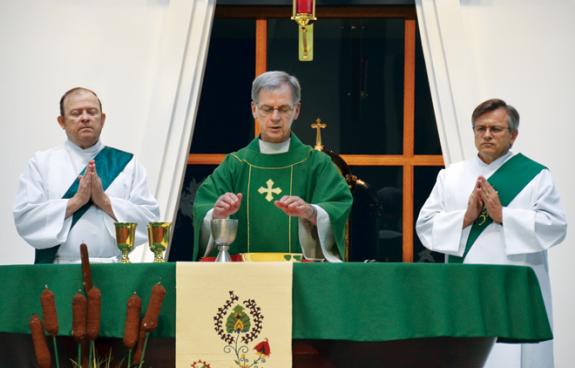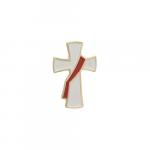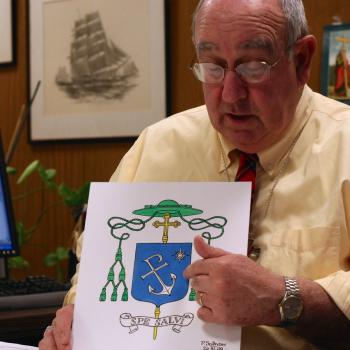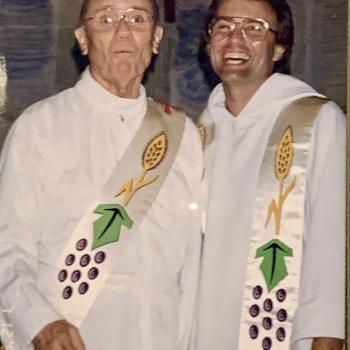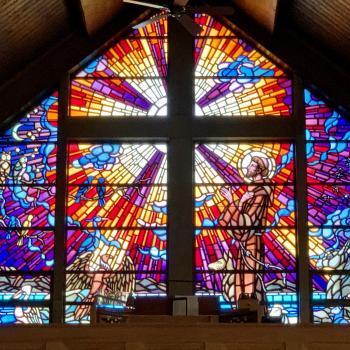The question popped up this week at Zenit:
Q: When two deacons are serving a Mass, it is understood that one deacon should be the deacon for the Liturgy of the Word and the other should be the deacon for the Liturgy of the Eucharist. However, there is disagreement as to whether or not the “speaking” parts transition with the liturgy. Should each deacon have the speaking parts that relate to his assigned liturgy, or should the deacon of the Word proclaim the sign of peace and the dismissal? – C.D., Colorado Springs, Colorado
Part of the answer, from the Rev. Edward McNamara:
All things being equal, when there are two deacons, they are usually divided as the deacon of the Word and the deacon of the Eucharist. It must be pointed out, however, that this terminology, although common, is not official and is generally absent from the liturgical books.
Apart from proclaiming the Gospel and the general intercessions, the deacon of the Word makes the invitation to the sign of peace and other interventions such as “The Mass is ended ….” The deacon of the Word takes his place to the celebrant’s left during the Liturgy of the Eucharist; alternatively, he may incense the Blessed Sacrament during the Eucharistic Prayer.
The deacon of the Eucharist attends to all that has to do with the altar and recites the private prayers used for the preparation of the chalice. He stands to the celebrant’s right during the Eucharistic Prayer. He may place or remove the chalice pall as needed and holds the chalice aloft during the final doxology. If necessary, he can also assist in the fraction rite. If the deacon of the Word is incensing the Blessed Sacrament, then he may also assist with the missal.
Both deacons stand slightly behind the priest when he is at the altar. Concelebrating priests should be careful so as not to obstruct the actions of the deacon.
This is the usual division of roles in papal and other solemn liturgies. However, as mentioned, these customs are not cast in bronze, and they do not respond to precise norms. I believe that the division has been left fairly open so as to be able to adapt to changing circumstances.
Thus, on occasion, some mixing may take place; for example, if the deacon of the Gospel is bereft of musical talent, the other deacon could substitute him in singing the invitation to the sign of peace or the dismissal. Likewise, the deacon closest to the microphone on the altar could proclaim the invitation to the sign of peace rather than make complicated movements.
A deacon who is to preach should usually take the role of the deacon of the Word so as to carry out both functions with ease and without interruptions.
There may occasionally be good reasons for a change in minister. For example, if the Gospel is to be sung, then the deacon better qualified for this task may proclaim the sacred text, even though another will preach.
Deacons, take note: if there will be more than one of you serving, talk to one another before Mass. Determine the division of labor — who will do what, and how. This will avoid any glaring mistakes and, moreover, help keep the two deacons from looking like fools. I still remember vividly a Mass I attended before I was ordained; at the Sign of Peace both deacons on the altar said, in unison, “Let us offer one another the sign of peace,” and the two then glared at each other as if to say, “That was my line, you idiot.”
Deacon pro tip: Don’t do that.

